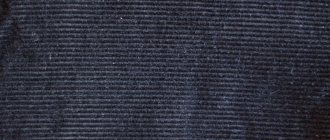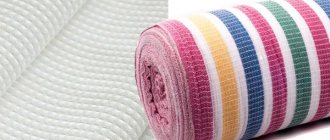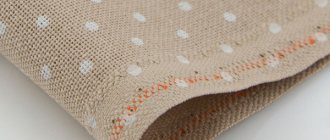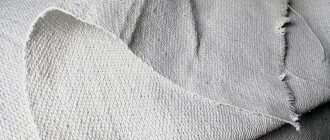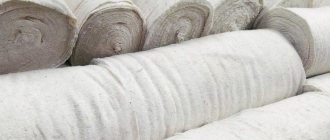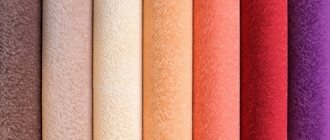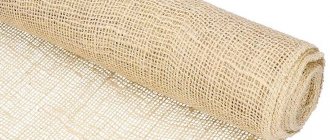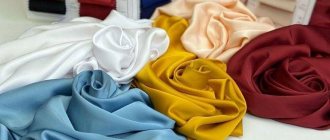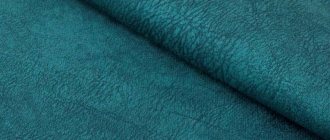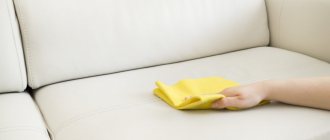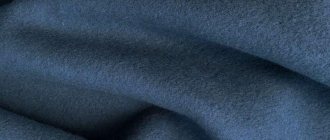Aramid fibers (aramids) got their name because of the benzene rings at their core, which are connected by amide bonds.
A distinctive feature of ultra-strong and ultra-high modulus aramid fibers is their highly oriented structure.
There are two types of threads: para and meta-aramids. The main types used on a large scale are threads based on para-aramids. According to general data, aramids were created almost simultaneously in Russia and the USA somewhere in the early 70s.
Due to their low density, aramids are superior to all types of industrially produced reinforcing materials in terms of specific strength, being inferior in elasticity modulus to carbon and boron fibers.
Ultra-strong para-aramid strands are widely used in the production of heavily loaded textile materials and products (cables, ropes, etc.).
Properties
In order to fully study the properties of aramid materials, you need to know how aramid thread differs from other fibers, what it is, and how you can improve the characteristics of the fabric itself.
Aramid fibers are threads that have a super-strong structure due to a special combination of atoms in the molecule. This provides the following properties that characterize aramid fabrics:
- high heat resistance - the fibers do not melt, the thread begins to break down only at temperatures above 500°C, but despite this, products made from aramid fabric can withstand short-term thermal shock of 1000°C;
- super strength - five times stronger than steel, withstands over 600 kg per sq. mm of tensile strength;
- lightness - two times lighter than fiberglass, the density of the canvas is 1500 kg/m3;
- biostability - does not absorb various odors, is not affected by bacteria and fungi.
General qualities of aramid fabrics
Several types of different products are made from aramid fibers. Many advantages are inherent in the entire group of materials.
- Amazing strength, which significantly exceeds the strength characteristics of steel.
- Little weight. Aramid fabrics are much lighter than fiberglass materials.
- Ability to maintain protective qualities at very high temperatures. At temperatures below 0°C, protective abilities are enhanced.
- Inability to burn and melt.
- Great resistance to mechanical action. The fabric can protect against bullets.
- Absolute inertness to the action of microbes.
- Ability to maintain shape throughout the entire period of use.
Aramid fabrics have some disadvantages.
- When wet in water, strength is lost. Restored after the material dries.
- Aramid fabrics age. To increase the service life, the material is additionally impregnated. Manufacturers provide guarantees of quality preservation for 10 years.
- Some types of aramid materials are sensitive to the sun.
Developers continue to improve the technology for producing fibers and materials. This allows us to hope for a reduction in the number of shortcomings in the future.
Aramid fabrics are indispensable in the production of workwear for the military, rescuers, firefighters, and metallurgists. They are used to make clothes, combat uniforms, body armor, helmets, and equipment. Thanks to this material, a large number of human lives have been saved.
Types of material
Aramid fabric includes several varieties, the most famous of which are the following:
- Kevlar - the strength of this material directly depends on the duration of exposure to high temperatures. If Kevlar is exposed to high temperatures for about three days, its strength is reduced by half. At the same time, the canvas does not react in any way to short-term thermal influences.
- SVM differs from Kevlar in composition and is therefore characterized by high strength. Synthetic high-strength materials include Armos and Rusar. Thanks to the use of wet-dry thread spinning technology, it was possible to significantly improve the mechanical properties of the fabric.
- Twaron is a Japanese analogue of Kevlar, also produced in the Netherlands. Lightweight, elastic, does not deform, and is highly durable.
- Nomex is elastic, but less durable compared to other aramids. It is used to filter hot gases, for sewing workwear, in shipbuilding and aviation.
- Kermel - popular in France, used mainly in the military industry. Comfortable to wear, soft, pleasant to the body. The threads themselves are dyed, so the fabric retains its color well.
- Arcelon is an analogue of Russian-made Nomex, it is an excellent dielectric, lightweight and elastic, and is widely used for sewing workwear for welders, firefighters and metallurgical industry workers.
Receiving technology
The principle of obtaining is basically the same, and is divided into two stages:
- Synthesis and isolation of polymer, preparation of molding solution;
- Forming fibers from spinning solutions.
The polymer is synthesized in a solvent and precipitated with water. The polymer is then washed and thoroughly dried. To obtain a molding solution, the polymer is dissolved in sulfuric acid.
The threads themselves are formed through an air gap using the so-called “dry wet method”. That is, the molding solution is forced through the dies and the resulting threads fall into the water bath. Then they are washed to remove traces of sulfuric acid and dried.
Areas of use
We can safely say that the fibers whose properties are described above are a fabric invulnerable to most negative factors. It is for this reason that aramid fabric is used in the following areas:
- Production of helmets, overalls, body armor
- Reinforcement of cables, tires, slings.
- Manufacturing of sports equipment, household appliances, musical instruments.
- Automotive industry, yacht and shipbuilding, fiber optic products.
- Sewing workwear for those who work in the petrochemical industry, as well as for workers whose activities are associated with the influence of high temperatures (firefighters, metallurgists, welders).
Specifications
Aramid fabric burns in pure oxygen. In air, in which oxygen accounts for only 1/5, it goes out. Aramids are ideal dielectrics. They can withstand high temperatures, but at 500°C they begin to decompose.
Important: The disadvantages of aramid fabrics include their aging. Manufacturers guarantee the preservation of the high strength characteristics of the material for 5 years. After a certain period of time, the processes of fiber degradation become irreversible. The durability of polymers increases after they are treated with special compounds.
The disadvantages of aramid synthetics include their poor colorability. Initially, all fibers are produced yellow, but when using the material for technical purposes, this factor is not decisive.
Flaws
Despite the fact that aramid fabric is considered almost magical (it does not allow bullets to pass through and does not burn in fire), it also has a number of disadvantages, which include:
- poor dyeability - this is the reason why most aramid products have yellow fibers;
- sensitivity to ultraviolet radiation - cannot be used for long periods of time in direct sunlight;
- decrease in strength when wet - when a product made of aramid fabric dries, its properties are restored;
- high cost makes it impossible to widely use aramid.
It is also worth noting that products made from aramid fabrics are guaranteed for no more than 10 years. The service life of clothing can be increased by using special impregnations, but this requires additional costs.
How and what is aramid fabric made of?
The fabric has good protective properties.
The material is made of aramid fibers. These are polymer formations in which monomers containing aromatic rings are linked to each other by linear and cross bonds. The strength of aramid fabric is due to cross-links, the content of which reaches 85%. In aromatic structures, there are ortho-, meta- and para-positions. Aramid fibers are made from meta-aramids, para-aramids and aramid copolymers.
- Para-aramids are called Tvaron, Kevlar, SVM, Terlon.
- Meta-aramids are called nomex, arcelon.
- Copolymers of aramids are called kermel.
All aramid fibers have enhanced protective properties. Meta-aramids are particularly durable. Para-aramids have increased thermal protective qualities.
Aramid fabrics are made using the following types of thread weave:
- linen;
- satin;
- twill;
- waffle
Some aramid fabrics are classified as knitted products. They are knitted on special looms from loops.
The ballistic variety of aramid fabrics consists of several layers. The weaving of the threads in each layer is different. Sometimes the top layer is made as a non-woven material.
History of appearance
Back in 1964, aramid fabrics were first developed by a chemist from the American company DuPont. Initially they were called “Kevlar”. And they were used to strengthen various composite compounds. They were also used to reinforce cable products and car tires. Today, the company that first discovered aramid fibers is a leading manufacturer of these materials.
In our country, in the USSR, in 1970, a similar material was invented - SVM.
The heavy-duty material obtained in our homeland and the American analogue were expensive and had a very narrow scope of use.
In 1985, the situation changed, the second generation of fibers was invented in the USSR, which had wet-dry molding, this made it possible to obtain even more improved fabrics. Currently, the range of aramid fabrics is very wide, and the scope of use has expanded significantly.
Some nuances
A material that has such unique properties requires special conditions for working with them. Due to their strength, fabrics are not easy to cut and sew. How to work with them?
If it is necessary to cut particularly durable fabric or plastic containing aramid additives, use a laser or diamond cutting tool, for example circular saws, drills with a special coating. There are also special scissors for aramid fabrics.
These “miracle scissors” differ from ordinary ones in the special coating of the blades and the presence of micro-teeth. The coating of the blades provides easy gliding, as well as protection against wear and scratching. Durable fabrics can be easily cut with such a specialized tool.
So, we figured out how to cut superfabrics, but now how to “sew” them?
Special Kevlar threads are used to join fabrics. They are durable and fire resistant. The needles are made of hardened steel. To prevent fraying of the cut edges of the fabric, use adhesive tape; burning the edges, which is mainly used in other polymer fabrics, will not help solve the problem here, since the aramid material does not melt.
Where can you find aramids
izdelia-1
izdelia-2
izdelia-3
izdelia-4
Aramid fabrics are primarily used to make protective clothing for workers in demanding professions: metallurgists, welders. The material is used to make combat uniforms for firefighters and rescuers of the Ministry of Emergency Situations. It can be found in all industries where fire protection is required.
Durable aramid material is in demand in many armies and police forces on the planet. It is used to make body armor and helmets.
Supplex is not very similar to ordinary fabric - you will not find longitudinal or transverse threads on it. The material is ergonomic in terms of movement, does not create any discomfort, and is available in a wide variety of colors. Clothes made from it are so bright and elegant that they never go unnoticed.
You will be simply irresistible in an “airy” dress made of thin muslin. Read about its advantages and disadvantages here.
Aramids in the form of fabrics or fibers are used in aircraft and rocket manufacturing. They are widely used in the national economy. The heavy-duty material makes excellent conveyor belts, tire reinforcement and strong cables, as well as aramid paper. It also makes excellent fiber optic cables.
Innovative aramid fabrics have been protecting human life and health for more than half a century. They reduce work risks and even provide comfort to representatives of the most dangerous, fiery professions.
Information: a factory for the production of aramid fabrics was launched in May 2015 in the village. Marusino, Lyubertsy district, Moscow region. Area 8.5 thousand sq.m.
This is interesting: Kirza: what kind of material is it, production, description, properties and care
Description
Aramid fiber is a polymer. Its main characteristic is high strength and resistance to mechanical influences. Moreover, it is widely in demand due to the fact that it can withstand the effects of temperatures. But let's talk about application later.
Look carefully at the photo:
Operation and care
Aramid fabrics are afraid of water. Wet fibers are less durable, but after drying their properties are restored. Such fabrics can still be washed and do not shrink. True, repeated washing, as well as exposure to direct ultraviolet radiation, affect the strength of aramids. With a waterproof coating, the durability of the materials increases. Bleaching agents and compounds used in dry cleaning of products negatively affect their properties.
Aramids successfully solve the problems of today that people face. But they can become ballast for the environment, since they will be too tough for any living creature living on Earth. That is why, along with the creation of polymer materials, it is necessary to resolve issues related to their disposal.
